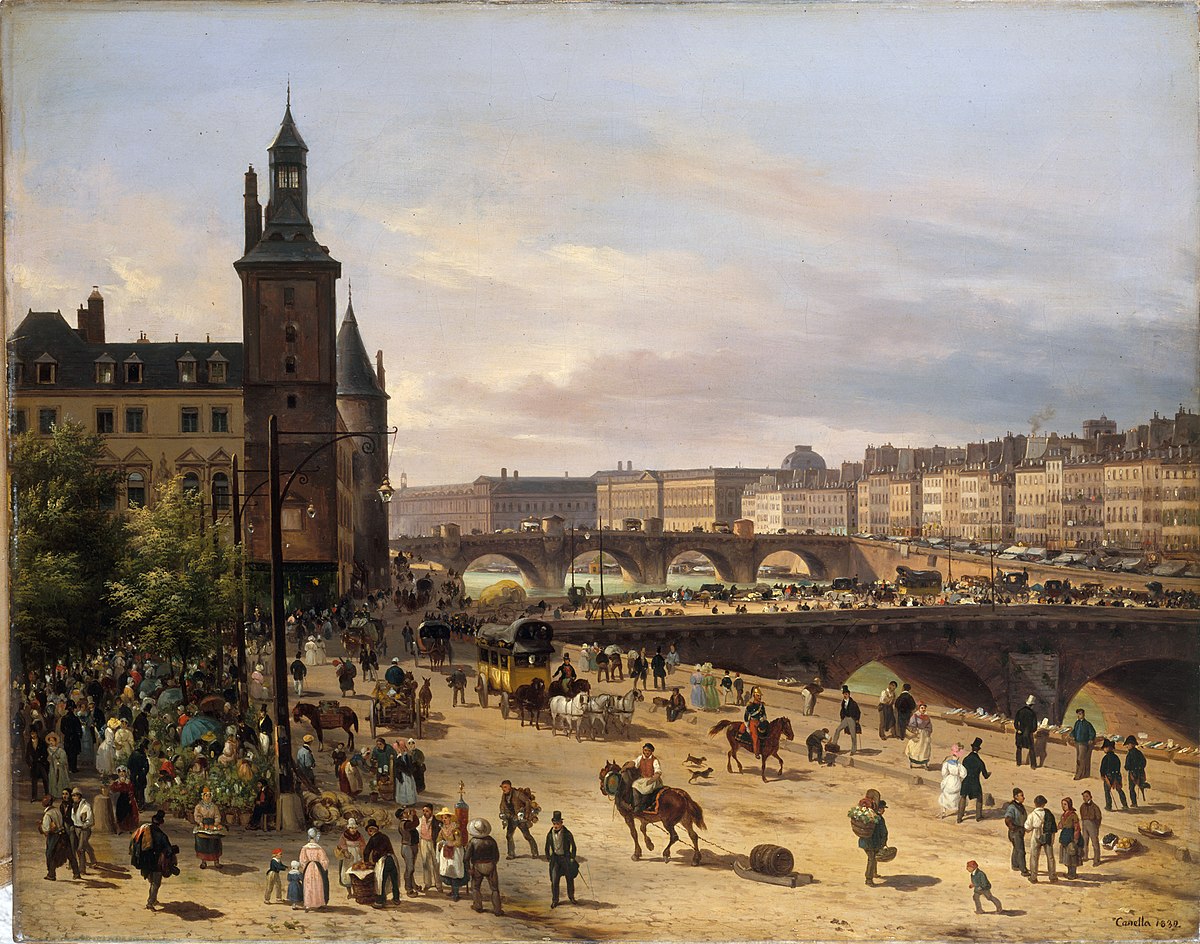
Paris under Louis-Philippe
Paris, FranceParis during the reign of King Louis-Philippe (1830-1848) was the city described in the novels of Honoré de Balzac and Victor Hugo. Its population increased from 785,000 in 1831 to 1,053,000 in 1848, as the city grew to the north and west, while the poorest neighborhoods in the center became even more crowded.The heart of the city, around the Île de la Cité, was a maze of narrow, winding streets and crumbling buildings from earlier centuries; it was picturesque, but dark, crowded, unhealthy and dangerous. A cholera outbreak in 1832 killed 20,000 people. Claude-Philibert de Rambuteau, prefect of the Seine for fifteen years under Louis-Philippe, made tentative efforts to improve the center of the city: he paved the quays of the Seine with stone paths and planted trees along the river. He built a new street (now the Rue Rambuteau) to connect the Marais district with the markets and began construction of Les Halles, the famous central food market of Paris, finished by Napoleon III.Louis-Philippe lived in his old family residence, the Palais-Royal, until 1832, before moving to the Tuileries Palace. His chief contribution to the monuments of Paris was the completion in 1836 of the Place de la Concorde, which was further embellished on 25 October 1836 by the placement of the Luxor Obelisk. In the same year, at the other end of the Champs-Élysées, Louis-Philippe completed and dedicated the Arc de Triomphe, which had been begun by Napoleon I.The ashes of Napoleon were returned to Paris from Saint Helena in a solemn ceremony on 15 December 1840, and Louis-Philippe built an impressive tomb for them at the Invalides. He also placed the statue of Napoleon on top of the column in the Place Vendôme. In 1840, he completed a column in the Place de la Bastille dedicated to the July 1830 revolution which had brought him to power. He also sponsored the restoration of the Paris churches ruined during the French Revolution, a project carried out by the ardent architectural historian Eugène Viollet-le-Duc; the first church slated for restoration was the Abbey of Saint-Germain-des-Prés.
